Being There
|
||||
|---|---|---|---|---|
|
WHAT: |
|
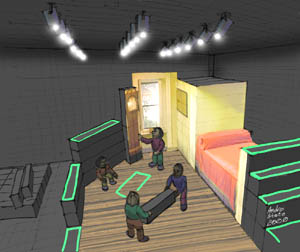 We envision a ¡°sea of projectors¡± in a warehouse-sized interior, in which we can re-create most indoor scenes. |
||
| ADVANTAGES: (1) very wide field of view, (2) real walking around, (3) reduced sensitivity to tracking errors and system latencies, (4) auto-stereoscopic vision, (5) natural addition of augmented virtuality, (6) provision of haptics. |
||||
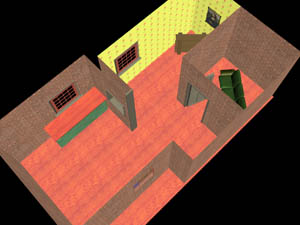 |
First, we need the scene model. Here, we have a synthetic model created using a modeling software. For model of real places, we can use a range-scanner to acquire the geometric information and a camera to capture the colors. | |||
|
|
||||
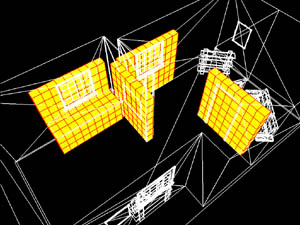 |
We then create a display-surface model by using one of our own software tools to arrange some primitive blocks near to the surfaces of the scene model that we want to display. The block size is the same as that of the physical Styrofoam blocks that we are using in this experiment.. | |||
|
|
||||
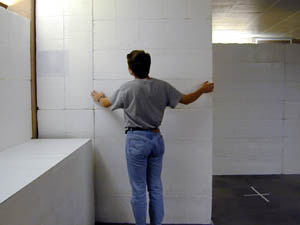 |
The
physical display surfaces are constructed in a laboratory, according to the
display-surface model, using industrial-purpose Styrofoam blocks. These Styrofoam
blocks were kindly sponsored by Reddi-Form,
Inc. |
|||
|
|
||||
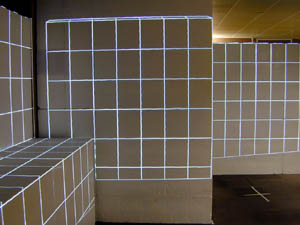 |
We
use 6 projectors and two 3rdTech HiBall trackers for this experiment. The 6
projectors are first calibrated with respect to a common tracker's frame of
reference.
After the projectors are calibrated, a wireframe of the display-surface model is projector onto the Styrofoam blocks. We use this method to fine-tune and verify the arrangement of the physical blocks. |
|||
|
|
||||
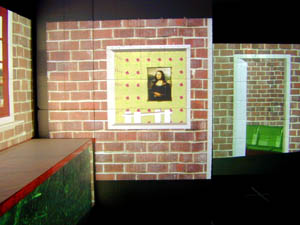 |
Since
the images on the display surfaces should be view-dependent, we need to track
the user's eye position. A two-pass rendering approach, using projective texture
mapping, is used to generate the correct imagery for the user. |
|||
|
|
||||
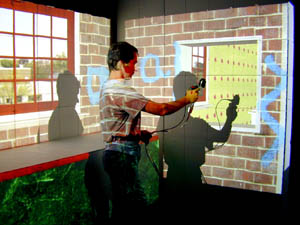 |
The
user can also interact with the virtual environment. Here, we use the second
HiBall tracker to track the position of a virtual spray-brush. We can see from
the photograph that the user is spray-painting on the moulding of a window that
is physically not there.
This example shows the usefulness of being able to move physically around virtual objects, which gives the user a natural way to interact spatially with the virtual environment. |
|||